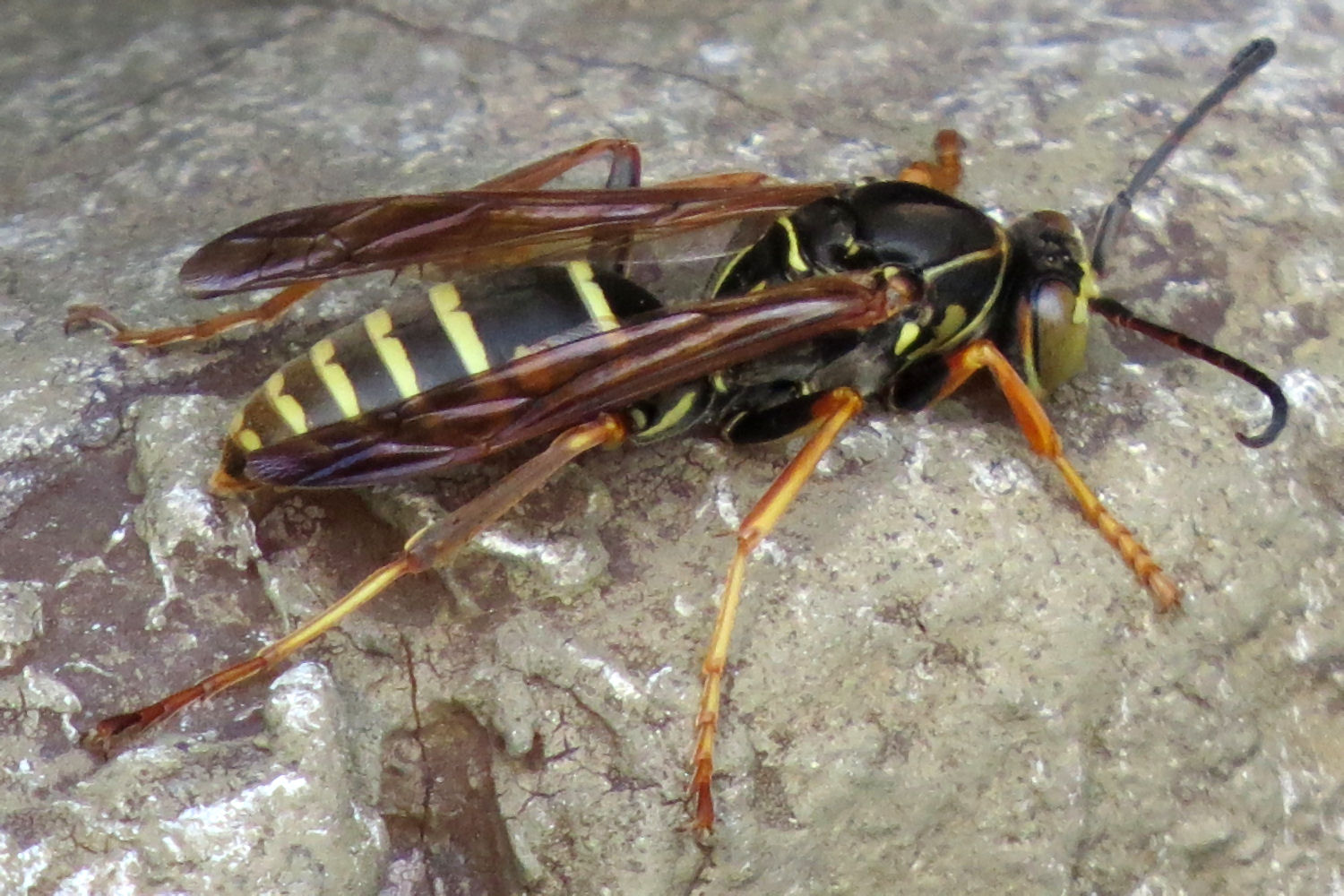One day last March, when the weather teased us with a note of spring, we took advantage of the day to sit out on the screened in porch. It was a sunny day, with a promise of warmer days to come.
In the corner were 15 or 20 reddish-brown insects with yellow rings around their abdomens. They were each about three quarters of an inch long, and seemed to be trying to find a way out of the screened-in enclosure. Bryan identified them as northern paper wasps. I am not fond of wasps, but Bryan, a gentle soul who hates to kill anything, captured the wasps one by one in a cup and took them outside to freedom. The wasps seemed content with this maneuver and flew away.
The next day twice as many appeared. Where did they come from? Once again, Bryan transported the wasps, one by one, to freedom.
On another warm day, dozens of them appeared. This time it took some sleuthing to figure out that they weren’t coming in from outside but instead were emerging from their winter home under the siding. Enough already. The wasp spray came out.
The natural reaction to a wasp in my experience, is to kill it as quickly as possible lest it sting. Even though these wasps were docile enough during our interactions with them, that long-trained reaction was strong. And yet, why not spare them to live another day?
The answer is that they’re actually beneficial and fascinating creatures. And they can be destructive and they can sting you. So how do they weigh in the balance?
First, they have an interesting lifecycle. Most insects do, I’m discovering. A queen, full of fertilized eggs, emerges in the spring. She starts building the communal nest by chewing up wood and mixing it with her saliva to make paper. she makes a stalk about half an inch long to suspend the nest from an overhang of some sort—my eaves for instance. She then creates a ring of 13 or 14 individual cells. These cells are open on the bottom side of the nest. I don’t know how the eggs keep from falling out, but they do. The nest begins to look like an upside-down umbrella. She then lays the first round of eggs. When they hatch, she feeds the larvae with masticated caterpillars until they are ready to pupate. At that point, the queen elongates the cell and covers it with paper to enclose the pupa. When the pupa is ready to be a wasp, she breaks out of her cell and joins the adults as a sterile female worker wasp. The worker wasps have three jobs—to catch caterpillars, chew them up and feed them to the new babies; to eat nectar for their own survival (which incidentally pollinates plants) and to continue building the nest. The queen is now in an egg-laying frenzy, so the workers construct ring after ring of individual cells, expanding the nest. Each ring has more cells than the last one. The cells are hexagonal and fit tightly together with their openings on the bottom side of the nest. This goes on all summer, with the nest getting bigger and bigger. In the fall, the wasp queen lays eggs that will specifically mature into queens or males. These lucky few leave the nest when they’re mature enough and go out to mate, most likely with partners from other colonies. At this point the old queen’s job is done, and she dies, leaving the colony to disperse in confusion and die off.
Now winter is coming, so the young queens, with their loads of fertilized eggs, find a place to hibernate—in the ground, or under the eaves? All the rest of the wasps, males and workers, die. Only the queens survive the winter and start the cycle over again.
Ants are a hazard to wasp nests because they want to eat the larvae. So the queen puts ant poison around the stalk that suspends the nest. She also excretes pheromones that help keep her family together until she dies. She and her brood will protect that nest from all comers, including us. A wasp can sting you more than once, but if you don’t bother the nest, the paper wasps are generally in a live and let live mode. Or so we think.
So, should we kill the wasps? Maybe not—they dispose of a lot of other insects, pollinate plants, and don’t bother me if I don’t bother them. I’ll pass on being stung, though.
Months later when I was walking along the sidewalk to the front door, a wasp stung me. That’s it. My sting was uncomfortable for an hour or so. But soon guests would arrive EpiPen in hand at risk of anaphylactic shock from wasp stings. We could give no quarter to the fascinating little critters. They had to go.
The nest was located on the porch, and a quick bombardment of wasp spray killed the nest instantly. So much for rescue efforts. A few more beginner nests had started as well and had to be dispatched.
And now we have a new rule. No wasp nests attached to the house. They can build them somewhere else.
Photo by D. Gordon E. Robertson

2 comments
My feelings as well. Protect our nest. Allow them to live elsewhere in peace!
We definitely need them as pollinators.